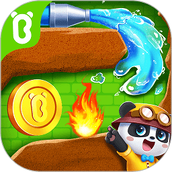最新下载
热门教程
- 1
- 2
- 3
- 4
- 5
- 6
- 7
- 8
- 9
- 10
iOS UIAlertController简单使用方法
时间:2022-06-25 23:39:08 编辑:袖梨 来源:一聚教程网
首先说下UIAlertView和UIActionSheet在iOS9之后苹果官方就不推荐使用了,而是使用UIAlertController来替代。
有图为证
所以学习一下UIAlertController的用法也是有必要的。
1.获取UIAlertController的类对象:
UIAlertController *alertController =[UIAlertController alertControllerWithTitle:@"Success" message:nil preferredStyle:UIAlertControllerStyleAlert];
2.获取UIAlertAction的类对象:
UIAlertAction *doneAction = [UIAlertAction actionWithTitle:@"Done" style:UIAlertActionStyleDefault handler:^(UIAlertAction *action) {
NSLog(@"123");
}];
3.用UIAlertController的类对象alertController的addAction方法添加UIAlertAction的类对象:
[alertController addAction:doneAction];
4.使用window的根视图模态出alertController
[[UIApplication sharedApplication].keyWindow.rootViewController presentViewController:alertController animated:YES completion:nil];
如果想用UIActionSheet类似的界面,只需要将第一步中的UIAlertControllerStyleAlert替换成UIAlertControllerStyleActionSheet即可。
如果程序用了这个API,那么在iOS7上会导致crash,所以需要版本兼容
UIAlertController *alert = [UIAlertController alertControllerWithTitle:@"title" message:@"message" preferredStyle:UIAlertControllerStyleAlert];
UIAlertAction *cancel = [UIAlertAction actionWithTitle:@"取消" style:UIAlertActionStyleCancel handler:nil];
UIAlertAction *confirm = [UIAlertAction actionWithTitle:@"确定" style:UIAlertActionStyleDefault handler:^(UIAlertAction *action){
[mainViewDelegate doBackupWithTag:BACKUP_STATISTICS_TAG_CONFIRM];
}];
[alert addAction:cancel];
[alert addAction:confirm];
[self presentViewController:alert animated:YES completion:nil];
可以看到,最大的区别,是UIAlertController不再使用delegate的方式来触发回调,而是直接传一个block
delegate和block并没有本质区别,只是触发回调的不同方式而已,解决的都是“在未来的某个时间,调用我”的问题。delegate的复用性更好一点,创建一个delegate实例之后,可以把它设置为多个控件的delegate,减少了重复。block的优势是更加直观,阅读起来更容易,因为代码都在一处,不需要跳来跳去地读代码
但是现在既然苹果官方使用block的频率越来越高,或许这也代表了一种趋势
相关文章
- 雨课堂网页版官网入口在哪 雨课堂网页版登录地址分享 12-15
- 漫蛙manwa漫画官方入口-漫蛙漫画app最新版免费下载 12-15
- 异环棉绒绒在什么位置寻找 12-15
- 大航海时代起源鱼子酱在哪购买 12-15
- 126邮箱登录入口官网网页版-126邮箱官方免费登录入口 12-15
- 番茄小说免费版入口-轻量便捷阅读体验 12-15














